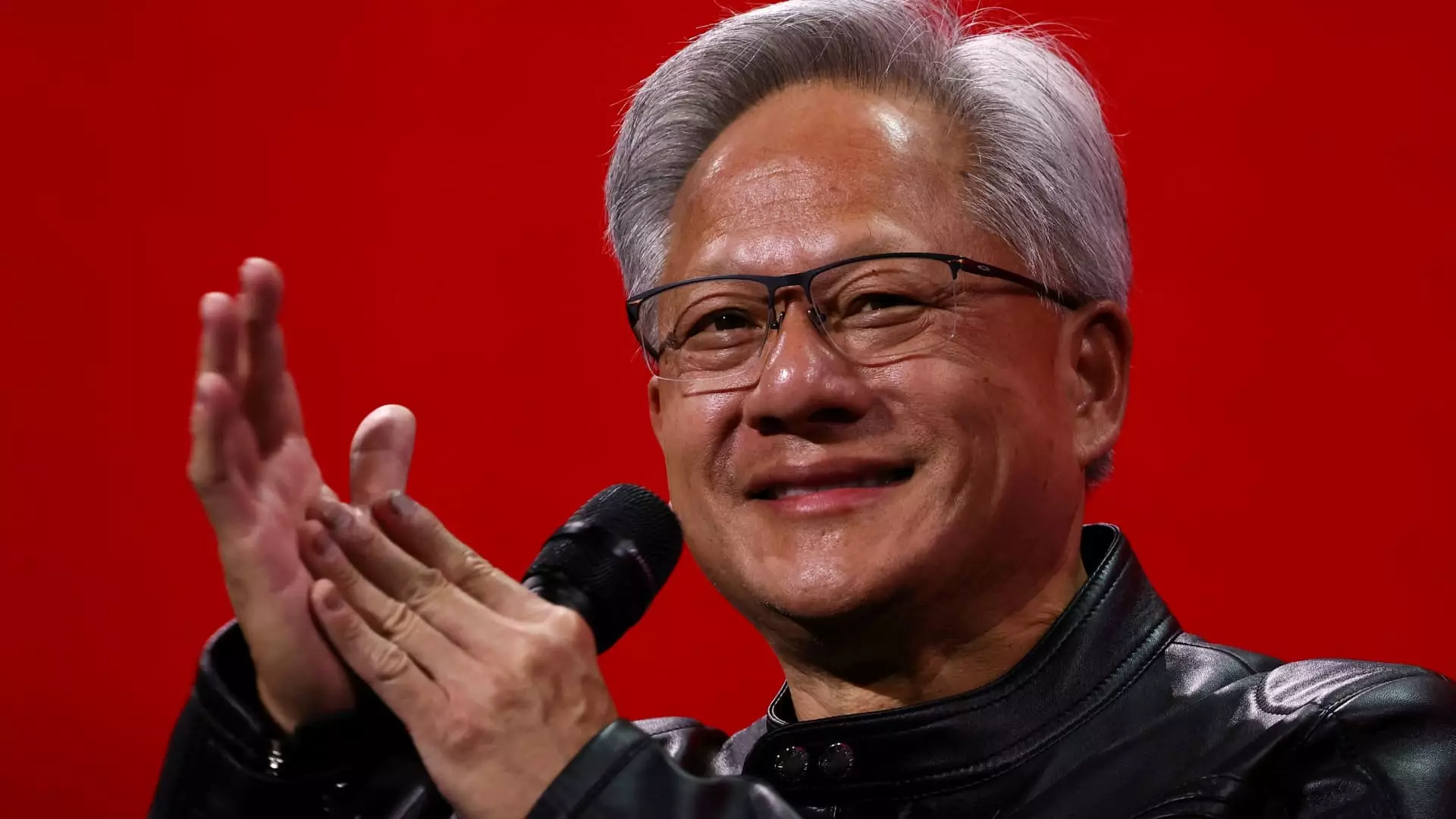The recent praise from Nvidia’s CEO Jensen Huang for China’s AI advancements seemingly paints a picture of cooperation and shared progress. However, beneath this veneer lies a complex and often conflicting reality. While Huang lauds Chinese companies for producing “world-class” AI models and embraces open-source efforts, it’s essential to scrutinize the underlying power dynamics and economic manipulations at play. His comments, albeit flattering on the surface, function more as strategic diplomatic gestures—signaling recognition without diminishing the overarching dominance of U.S. tech firms.
There’s a stark irony in Huang lauding Chinese innovation while maintaining a cautious stance regarding U.S. export restrictions. His acknowledgment of China’s AI progress and open-source contributions is partially a counterbalance to the restrictive measures that threaten to undermine American technological leadership. These restrictions have intentionally created a precarious environment where China’s rapid innovation is both celebrated and subtly contained, revealing that U.S. policies are less about fostering global progress and more about geopolitical leverage. The narrative of mutual respect quickly unravels when considering how these restrictions stress Chinese innovators and, in turn, stifle genuine cooperation.
American Economic Interests: Behind the Curtain
Nvidia’s chips are the backbone of China’s AI boom, yet the US government’s export controls reveal an underlying concern—technology becoming a weapon in the geopolitical struggle. Huang’s statements about “resuming shipments” and “assurances from the U.S. government” seem transactional, a mere nod to economic pragmatism rather than a desire for equitable technological exchange. This tug-of-war exemplifies how deeply intertwined economic interests are with national security concerns.
The U.S. strategy of halving Nvidia’s sales and restricting chip exports aims to contain China’s military and technological ambitions—yet it inadvertently hampers global progress. These restrictions create a skewed playing field, hindering innovation not only in China but across international markets that rely on American semiconductors. If the ultimate goal is to foster a level-playing field rooted in open standards and innovation, then these protectionist policies do a disservice to everyone. It’s a zero-sum game where national security and economic prosperity clash, not collaborate.
Open Source as a Weaponized Promise
One of Huang’s notable claims is that open-source AI can serve as a catalyst for global progress and safety. While this is a compelling narrative, it too should be approached critically. Open source in China manifests as a strategic tool—an effort to bypass restrictions and create a self-sufficient AI ecosystem that diminishes Western dominance. The recent release of Kimi K2 by Alibaba-backed Moonshot exemplifies this trend; it’s a deliberate move to challenge OpenAI’s ChatGPT and other Western-made models.
Though Huang frames open-source as an egalitarian breakthrough, in reality, it operates as a dual-edged sword. For Chinese developers, open source offers independence and resilience against restrictions. For the West, it presents an encroaching challenge to proprietary control—an industry shift that threatens to undermine their technological hegemony. Moreover, reliance on open source for safety and standards can be problematic if governance remains fragmented or influenced by state interests. Real progress requires more than code sharing; it demands genuine transparency, accountability, and equitable participation across borders.
The Political Divide Cloaked in Innovation
The broader narrative of U.S.-China AI competition exposes the fault lines of nationalism, economic strategy, and technological sovereignty. While Huang emphasizes the role of Chinese tech in “powering” consumer applications like WeChat and Taobao, he conveniently sidesteps the fact that these advances are often the product of state-backed initiatives, aimed at cementing China’s digital sovereignty.
Meanwhile, the narrative pivots on fears—fears that Chinese military applications or espionage will harness American tech. But this perspective is shortsighted. It reduces innovation to a threat rather than recognizing potential avenues for genuine cooperation, which could democratize AI benefits globally. Instead, the current climate fosters a fragile standoff, where technological progress becomes a chessboard of regulations, restrictions, and strategic posturing.
The U.S. position, ostensibly centered on safeguarding national security, paradoxically hampers the very global cooperation that could propel AI advancements forward. Meanwhile, China’s sustained push to develop independent AI models signals resilience and a desire to challenge the existing power structures. Both sides could learn that effective global progress depends less on control and more on shared responsibility and ethical standards—a lesson that appears to be lost amidst the heated rhetoric and geopolitical maneuvering.

